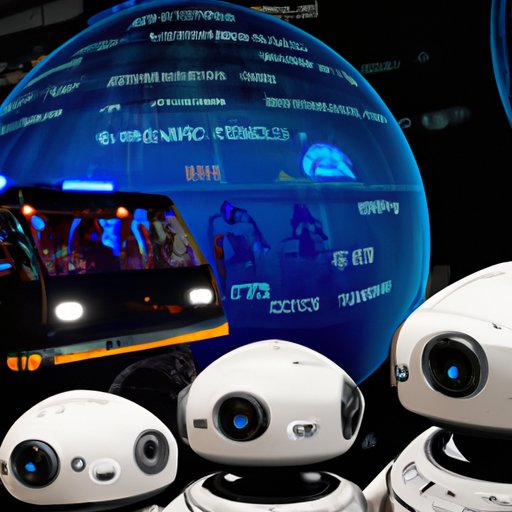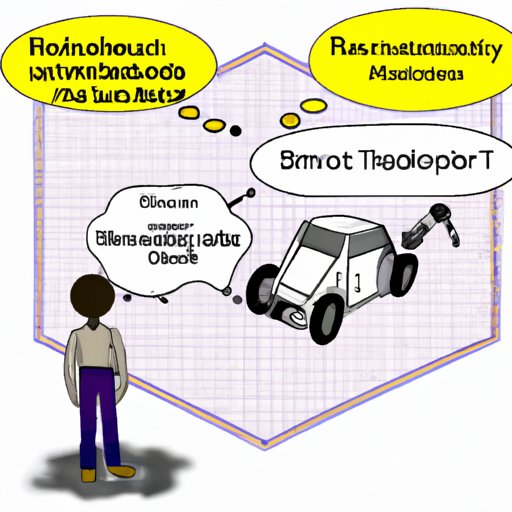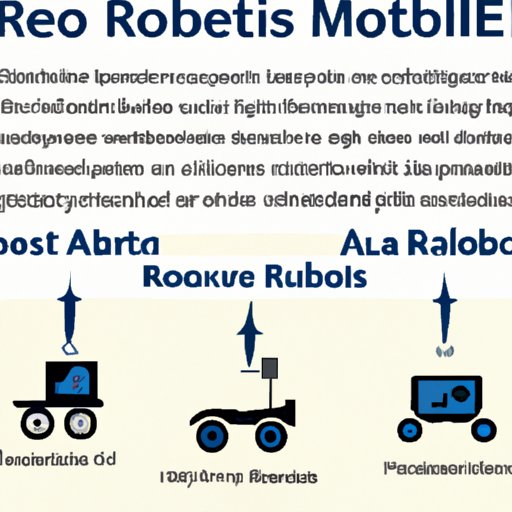Introduction
Autonomous mobile robots (AMRs) are intelligent machines that can move around autonomously in an environment, often performing a task or set of tasks. AMRs are powered by artificial intelligence (AI) algorithms and sensors, allowing them to navigate their environment and interact with objects. In recent years, AMRs have become increasingly popular for use in a variety of industries, from manufacturing and logistics to healthcare and retail. This article will explore the benefits, applications, and potential impacts of autonomous mobile robots.

A Guide to Autonomous Mobile Robots: What They Are and How They Work
An autonomous mobile robot is composed of several components, including a computer processor, sensors, actuators, and a power source. The processor is the “brain” of the robot, responsible for computing instructions and interpreting data from the sensors. Sensors allow the robot to detect its environment, such as obstacles and other objects. Actuators are used to control the movement of the robot, such as motors and wheels. Finally, the power source supplies energy to the robot, typically a battery.
In addition to these components, AMRs rely on AI algorithms and software to analyze data from the sensors and make decisions based on the environment. For example, a robotic vacuum cleaner uses an AI algorithm to scan its surroundings and determine the best route to clean a room. This type of AI-powered decision-making is what enables AMRs to operate autonomously.
There are a variety of AMRs available today, ranging from small robots used in warehouses to large self-driving cars. Some of the most common types of AMRs include warehouse robots, robotic vacuums, self-driving cars, delivery robots, and agricultural robots.

Exploring the Futuristic World of Autonomous Mobile Robots
The potential benefits of autonomous mobile robots are numerous. According to a report by McKinsey & Company, “Robots can take on dangerous, tedious, or repetitive tasks, freeing up human workers for higher-value activities.” This could include tasks such as hazardous material handling, heavy lifting, and precision manufacturing. Additionally, AMRs can be used to reduce human error, improve productivity, and increase efficiency.
However, there are also some challenges associated with AMRs. For example, AMRs require a significant amount of energy, which can be costly. Additionally, AMRs can be prone to malfunctions and breakdowns. As a result, it is important for businesses to invest in reliable hardware, software, and maintenance services in order to ensure that their AMRs remain operational.
Another challenge associated with AMRs is the potential for misuse. As noted by Dr. Nick Bostrom, director of the Future of Humanity Institute at Oxford University, “We need to think carefully about how we deploy robots, to ensure they are being used ethically and responsibly.” For example, if an AMR is used to deliver goods, there must be safeguards in place to prevent theft or damage.
Autonomous Mobile Robots: The Future of Automation
The potential impact of autonomous mobile robots on businesses and industries is immense. According to a study by Technavio, the global AMR market is expected to grow at a compound annual growth rate of over 15% between 2019 and 2023. This growth is driven largely by the increasing demand for efficient and cost-effective automation solutions.
The potential impact of autonomous mobile robots on society is also significant. For example, AMRs could be used to deliver goods and services, reducing traffic congestion and pollution. Additionally, AMRs could be used to provide assistance to elderly and disabled individuals, allowing them to remain independent for longer. Finally, AMRs could be used for search and rescue operations, providing a safe and efficient way to locate people in dangerous environments.
Conclusion
In conclusion, autonomous mobile robots offer great potential for businesses and society alike. By taking on dangerous, tedious, or repetitive tasks, AMRs can help businesses increase efficiency and reduce costs. Additionally, AMRs can be used to provide assistance to elderly and disabled individuals, and to reduce traffic congestion and pollution. However, there are also challenges associated with AMRs, such as the potential for misuse and the need for reliable hardware and software. As the technology continues to evolve and become more widely adopted, it is important to consider both the benefits and challenges of autonomous mobile robots.

Final Thoughts on Autonomous Mobile Robots
The future of automation is here, and autonomous mobile robots are leading the way. With the right hardware, software, and maintenance services, businesses can reap the benefits of AMRs while minimizing the associated risks. As AMRs become increasingly sophisticated and widespread, it is important to consider their potential impacts on businesses and society. Through thoughtful deployment and ethical use, autonomous mobile robots can be a powerful tool for improving safety, efficiency, and quality of life.
(Note: Is this article not meeting your expectations? Do you have knowledge or insights to share? Unlock new opportunities and expand your reach by joining our authors team. Click Registration to join us and share your expertise with our readers.)
